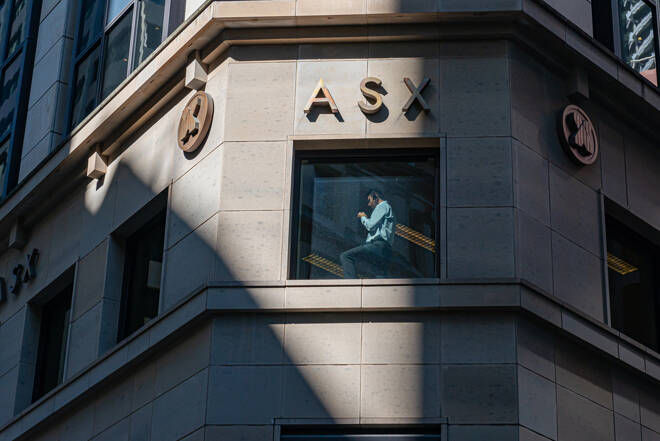Advertisement
Advertisement
ASX200: Weekly Wrap – 03/12/2021
By:
The ASX200 sees another weekly loss, with FED Chair Powell and COVID-19 doing the damage. In the week ahead, the RBA will be in the spotlight, with stats on the lighter side.
Economic Calendar
Tuesday, 7th December
House Price Index (QoQ) (Q3)
RBA Interest Rate Decision & Rate Statement
The ASX200
It was another bearish week for the ASX200, which fell by 0.52% in the week ending 3rd December. In the week prior, the ASX200 had fallen by 1.58%.
Economic data failed to have an impact in the week, as the markets responded to FED Chair chatter and COVID-19 news updates.
Early in the week, FED Chair Powell gave testimony on Capitol Hill. The FED Chair spoke of the need to discuss accelerating the tapering of bond purchases. More significantly, however, was a shift in view on inflation. Powell stated that it was time to end referring to the latest spike in inflation as transitory.
The comments raised the prospects of a sooner than anticipated move on interest rates. Importantly, the comments also affirmed market fears of a more hawkish FED following Powell’s reappointment in the week prior.
The Stats
Company gross operating profits and private sector credit figures were in focus early in the week.
In the 3rd quarter, profits rose by 4.0% off the back of a 7.1% jump in the quarter prior. Private sector credit increased by just 0.5% in October, however, easing from a 0.6% rise in the month prior.
Mid-week, GDP numbers for the 3rd quarter delivered some comfort, with the economy contracting less than expected.
Quarter-on-quarter, the economy contracted by 1.9% versus a 2.7% contraction. The economy had expanded by 0.7% in the previous quarter.
Late in the week, trade data drew little interest in spite of a narrowing of the trade surplus from A$12.243bn to A$11.220bn.
From Elsewhere
Economic data from China failed to impress.
In November, the Caixin Manufacturing PMI fell from 50.6 to 49.9 versus a forecasted decline to 50.5.
According to the November survey,
- Three of the 5 PMI components weighed in November, these being
- New orders fell marginally after 2-months of expansion. High output prices and the pandemic were cited as reasons for the decline.
- Employment levels fell for a 4th consecutive month, though the rate of job shedding remained marginal.
- Suppliers’ delivery times also weighed.
- By contrast, output and stocks of purchases had positive influences.
- After rising rapidly in October, input costs rose only modestly in November, with the rate of inflation the slowest since Oct-2020.
- As a result, the rate of output charge inflation also slowed considerably in the month.
At the end of the week, the Caixin Services PMI fell from 53.8 to 52.1, rounding off a poor week on the economic data front.
The Market Movers
It was a mixed week for the banks. Macquarie Group rose by 2.26% to lead the way, with Commonwealth Bank of Australia (+1.90%) and NAB (+1.12%) also finding support. Westpac (-1.80%) and ANZ (-0.15%) ended the week in the red, however.
Commodity stocks also had a mixed session. Fortescue Metals Group Ltd and Newcrest Mining fell by 0.52% and by 6.18% respectively. Rio Tinto and BHP Group ended the week up by 1.12 and by 5.78% respectively.
Other Asian Markets
Elsewhere, it was a mixed week. The Hang Seng Index and the Nikkei225 fell by 1.30% and by 2.51% respectively, while the CSI300 ended the week up by a modest 0.84%.
The Week Ahead
It’s a quiet week ahead on the Asian economic calendar. From Australia, stats are limited to house price figures that should have a muted impact on the markets. While stats are on the lighter side, the RBA monetary policy decision and rate statement on Tuesday will be key.
From China, inflation and trade data will draw plenty of attention, however.
Away from the economic calendar, expect COVID-19 news updates and any further government measures to contain the spread of the Omicron strain to test support for riskier assets.
For now, the key downside risk remains news of Omicron resilience to extisting vaccines…
About the Author
Bob Masonauthor
With over 28 years of experience in the financial industry, Bob has worked with various global rating agencies and multinational banks. Currently he is covering currencies, commodities, alternative asset classes and global equities, focusing mostly on European and Asian markets.
Advertisement
